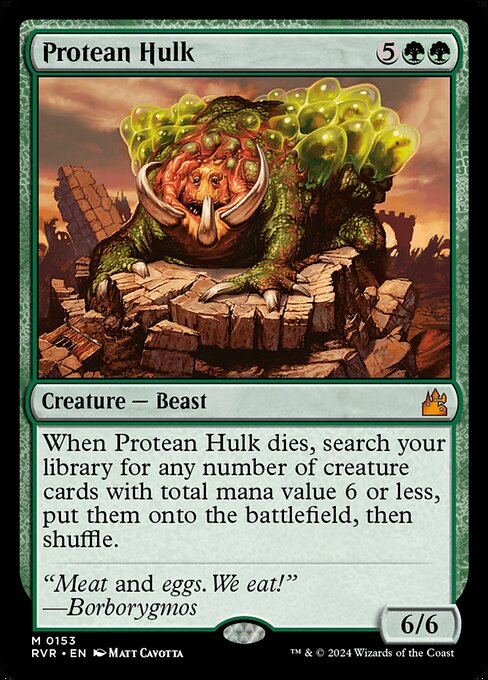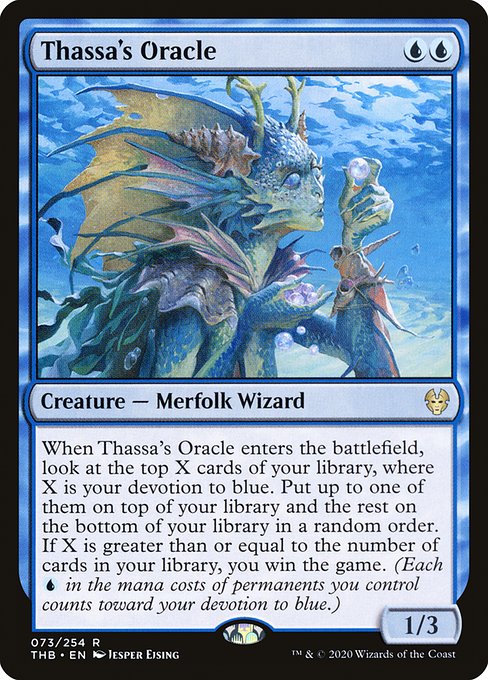After clearing up the confusion that this announcement was not referring to the mechanic of the same name, but an individual card, multiple people in my MTG playgroup came to me with this question. The Commander Rules Committee has given a fairly succinct explanation as to their reasoning behind the ban, but if you aren’t familiar with cEDH (competitive Commander) or even Flash‘s history in competitive Magic, it doesn’t actually answer anything.
While this is somewhat understandable, as the percentage of Commander players the announcement was for are already fully aware of what has been transpiring in their wing of the format, today’s post (and history lesson) is for the rest of us just looking for some fun games with friends at the gaming table, or thanks to the pandemic, at a safe distance with online options like a SpellTable MTG setup or untap.in.
So let’s start with a look at Flash, the card.

On the surface, this card looks pretty innocuous. You effectively get to put a creature into play at instant speed, and if you don’t pay for the rest of the creature’s cost, you lose the creature. Pretty fair, right? Flash was originally printed in Mirage, and really didn’t have a major spot in the limelight for many years. In a world that progressed from Necropotence to Recurring Nightmare and Survival of the Fittest to Urza Block, this isn’t especially surprising.
There were a couple reasons for this remaining the case beyond this point, but we’ll need to fast forward to 2006-2007 in order to fully explore them.
Most newer players don’t know this, but a lot of older cards were subject to what was known as power-level errata for several years. This meant a card’s abilities could be changed to what was intended or desired at the time, despite how the card was printed. While the desire to have such a safety net is understandable, having your cards be subject to special stipulations that exist outside the comprehensive rules was cumbersome, and it would inevitably create a perpetually increasing workload for Wizards of the Coast if they kept pursuing that strategy to balance unseen interactions with new releases.
So they got rid of it. Looking back, I’m glad they elected to use Oracle rules text in Gatherer to show cards in a way that clarifies how a card works based on how it was actually printed, but this created a lot of chaos when the change was initially made and as it was gradually rolled out. Flash was one of the cards subject to power-level errata back in 2000, and was reworded to prevent the creature you used it with from coming into play if you didn’t pay for it.
This errata was stripped away right before Grand Prix Columbus in 2007. Enter Protean Hulk, printed originally in 2006’s Dissension.

A lot of digital ink was spilled over this change, as well as the subsequent decision to not ban Flash before this Legacy tournament. Because of how absurdly powerful the interaction between Flash and Protean Hulk was, you were either playing this deck, or you were playing a deck that was poised to defeat it. Bill Stark’s Masters 25 preview article gives you some excellent insight about what this meant from a competitive standpoint – including both the infinite combo between Carrion Feeder, Karmic Guide, and Kiki-Jiki, Mirror Breaker that Protean Hulk enabled as well as the match he played against eventual winner Steve Sadin (whose decklist can be found here, along with coverage of the event).
Unsurprisingly, Flash was banned in Legacy less than 2 weeks after Grand Prix Columbus for its format-warping power level. The next year, 2008, was when a fledgling format called EDH (now known as Commander) began to become widespread news. Flash Hulk was still in very recent memory during this time and more powerful than many interactions in the Vintage-like format, so Protean Hulk was quickly banned to prevent similar shenanigans.
As a result, most players being introduced to EDH never had to experience the Flash Hulk combo directly, but education was still readily available for those who wanted to understand why it was not allowed. Years went by without us hearing much about this game-winning combo, slowly fading into memory for many of us. That changed on April 24, 2017, when Protean Hulk was unbanned with this reasoning:
“…we feel as though it’s time to let Protean Hulk off the leash. A number of factors led to this decision. Support within the community has been tilting toward Protean Hulk for quite some time. Inside the Rules Committee, we have been leaning in that direction for a while as well, but didn’t have enough of a consensus. Now we do. We acknowledge that the card will be strong, but are of the opinion that it won’t be the centralizing factor it once would have been. Back when Protean Hulk was banned, both creatures and graveyard control were nowhere near as strong as they are today. We know combo possibilities exist with the card, but they need to be specifically built around, so to us it becomes a great value card instead of a dangerous combo piece in casual environments. We suspect that Protean Hulk will be much like Kokusho, the Evening Star when it was unbanned: powerful but not broken in the current Commander landscape.“
This decision was very polarizing among the Commander community, and I was among the many that did not care for it. While I’ll admit everything the Rules Committee stated then has proven correct to this point, I’m still not 100% sold on the move. Fortunately, my casual playgroups didn’t do much with Protean Hulk, and its degeneracy was primarily relegated to cEDH environments. Since cEDH is not my primary stomping grounds, I found this really nice primer that lays out the basics of what a cEDH Flash Hulk (also known as Breakfast Hulk) deck looked like and details how it operated back then.
In short, this deck seeks to get Flash and Protean Hulk into your hand as quickly as possible, does what it can to protect Flash‘s resolution, and then puts Grand Abolisher and the pieces to set up your win condition (Cephalid Illusionist, Nomads en-Kor, and Hapless Researcher). Your opponents cannot interact with you because of Grand Abolisher, you proceed to mill your deck into your graveyard with Cephalid Illusionist and Nomads en-Kor, grabbing Narcomoeba along the way. You then flashback Dread Return (keeping the Grand Abolisher and Hapless Researcher) to put Laboratory Maniac onto the battlefield. All that’s left is to draw a card through your Hapless Researcher, and you win the game.
This strategy was pretty efficient compared to others within the cEDH metagame, and it was capable of winning at instant speed to boot. However, it got just a bit more ridiculous with 2020’s release of Thassa’s Oracle.

Thassa’s Oracle has a couple big advantages over Laboratory Maniac. It does not require you to draw a card to win the game, and removing it from the field when trying to win the game with it doesn’t stop you from winning. These benefits are both key because they remove significant opportunities for your opponents to interact with your combo, and they create additional lines of play with (and without) Protean Hulk and Flash alongside cards like Demonic Consultation and Tainted Pact (sometimes aided and abetted by Spellseeker) because they combo with Thassa’s Oracle directly as a win condition.
Despite these perks, Laboratory Maniac actually got better with this release too! Thassa’s Oracle offers lines of play that get around common hate cards for Laboratory Maniac, and the same is also true the other way around. Ducking previous silver bullets like Cursed Totem became super easy, and new silver bullets for Thassa’s Oracle like Torpor Orb didn’t work on Laboratory Maniac.
Here’s an example of what the rebranded Sushi Hulk deck evolved into, and it was nothing short of a finely tuned machine with ample redundancy and ways to win. Concerted efforts by the other players at the table were often key for keeping Sushi Hulk from winning, and even those weren’t always enough. Murmurs for the Rules Committee to do something about this had been building for a while, and Thassa’s Oracle, having exacerbated the Flash Hulk problem, built these murmurs into noticeable outcry.
On April 20, 2020, action was taken, Flash was banned, and the day was saved (for now – we Magic players will find something new to complain about in no time). Now that you’re caught up on the history of Flash and what prompted the Rules Committee to address this matter, there are a couple interesting questions this banning brings up.
The first is whether cEDH will play a role in future bannings. The Commander Rules Committee was unusually direct in addressing this concern:
“…Enough cEDH players who we trust have convinced us that it is the only change they need for the environment they seek to cultivate. Though they represent a small fraction of the Commander playerbase, we are willing to make this effort for them. It should not be taken as a signal that we are considering any kind of change in how we intend to manage the format; this is an extraordinary step, and one we are unlikely to repeat.”
cEDH doesn’t make up anything close to a majority of Commander players right now – I’d be surprised if it takes up more than 5-10% of the format. Taking a hard line in the sand with this part of the community is key for ensuring the rest of us can continue enjoying the format without undue influence moving forward. The tail does not wag the dog, and that’s the way things should remain.
The second question this banning raised was whether Flash was the right half of the Flash Hulk combo to ban. Personally, I think it was for a few reasons:
- Flash is what enabled instant speed victories in Sushi Hulk
- Flash serves as both a mechanic to cheat creatures into play AND a sacrifice outlet for them
- Flash exists in a fairly unique card design space that is unlikely to be explored further – it’s far more likely that a card functionally similar to Protean Hulk will see print in the future over one that is functionally similar to Flash
I can completely understand those who feel Protean Hulk should have been the card to get the boot though. Protean Hulk can still win games out of nowhere without Flash, but it is far less likely Flash will do similarly powerful things on its own. Heck, most decks wouldn’t even consider including Flash in a deck before the ban! Time will tell whether this was the right call, I suppose.
That concludes our trips through history and memory lane! If you’d like to come talk all things MTG with me, consider having a look at our Patreon! Donations of $1 or more grant access to our awesome Discord community, where we play video games, chat about all things gaming, and even start the occasional GIF war! I also recommend checking out our YouTube channel – I’ve done a Secret Lair unboxing there, and am planning additional MTG content for the future as well! Thanks for reading, and we’ll see you next post!
Braden is a founder of Assorted Meeples and has been a gamer & writer with a vivid imagination all his life. Don’t believe us? Check out his excitement when meeting Goosebumps author R.L. Stine as a kid! An avid Magic: The Gathering spellslinger for over 15 years, you can always convince him to shuffle up for a game (or three!) of Commander.
